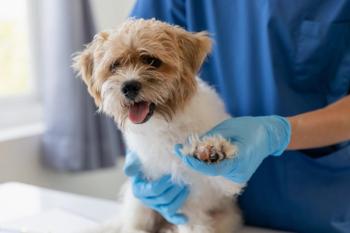
Photo gallery: Top 10 veterinary issues in 2010
Revisit the events that shaped the veterinary profession in 2010.
The year in review
From battling the largest man-made disaster in U.S. history to declining veterinary visits, veterinarians have had quite a year. Here's a look at the top 10 issues that shaped the veterinary profession over the last 12 months.
Documenting the decline
Veterinary visits are dropping at the same time the human-animal bond is thought to be at an all-time high. The trend is so alarming that veterinary leaders from Banfield, the American Veterinary Medical Association and Hill's Pet Nutrition are organizing a profession-wide campaign to reverse dwindling client numbers to veterinary practices. In addition, a new study aimed at better understanding the decline in client numbers is slated for an early 2011 release. The National Commission on Veterinary Economic Issues (NCVEI), Brakke Consulting and Bayer Animal Health are collaborating on this study.
The Gulf oil spill
Nearly 7,000 animals died in the Gulf of Mexico following the worst man-made disaster in U.S. history. And veterinarians aided injured wildlife in a massive, multi-state cleanup from April to July. BP's damaged oil well spewed some 185,000 gallons of crude oil up to 68,000 square miles. The federal government reports that 9,438 birds, sea turtles and other wildlife were collected during recovery efforts; 6,814 of them died and 4,822 were visibly oiled.
Breed wars
Tougher regulations governing domestic dog breeders could be contributing to a spike in overseas importation of high-demand breeds. The Government Accountability Office recently reported that there is not enough oversight on animal imports, opening the borders to a variety of diseases. Some veterinarians fear long-term health impacts of poor breeding practices from operations outside, and inside, the United States. Unscrupulous dog-breeding practices have been a subject of ongoing legislative activity and ballot initiatives in the United States. In fact, the welfare debate erupted again during the elections with the passage of Missouri's Proposition B calling for tougher rules on commercial breeders.
Heartworm resistance
In the Gulf region, reports surfaced of the possible resistance to heartworm preventives. While the canine population is small, veterinarians, researchers and manufacturers are concerned about this population of dogs testing positive for heartworm disease and the possible long-term implications. Most recently, the Companion Animal Parasite Council (CAPC) and American Heartworm Society (AHS) issued a joint statement saying the problem could be attributed to a combination of poor owner compliance and changing environmental/vector factors.
Female vets: the new majority
For the first time in history, women overtook men as the majority in the American Veterinary Medical Association. The trend will continue well into the future too because veterinary colleges are admitting 70 to 80 percent female students.
Antibiotic debate
Antimicrobial usage, especially in food animals, came to a head in 2010. The U.S. Food and Drug Administration ruled that antibiotic use should be limited to medically necessary cases, while the American Veterinary Medical Association declared that it would seek greater involvement in discussions about antibiotic uses, regardless of distribution channels.
Hard times in the heartland
Rural areas, especially those that depend on food-animal veterinarians, are crying out for greater access to veterinary care. Existing rural DVMs are finding it more difficult to recruit new veterinarians to those areas. Several states and the federal government now are offering incentives to help fill the void. In fact, recently, the USDA shelled out $5.9 million to help defray student loan costs for new veterinarians willing to practice in underserved areas.
Recession pains
Veterinary education took major losses from state cuts in 2010. Leading the list of casualties included the University of California, University of Pennsylvania and Louisiana State University.
Safeguarding racehorses
The veterinary profession is sprinting to find ways to improve the safety of horse racing. Just recently, the American Association of Equine Practitioners issued a new set of clinical guidelines for treating racehorses and officials with the United States Department of Agriculture are looking to revise its system for inspecting horse shows to improve welfare standards.
Vet2011: The year of the veterinarian
Veterinary medicine celebrates its 250th year in 2011, and a kind of global “party” is in the works. Numerous organizations from around the world are honoring veterinarians through special events. Officials are also asking Congress to formally recognize veterinary medicine's many contributions to society. For more info go to
Newsletter
From exam room tips to practice management insights, get trusted veterinary news delivered straight to your inbox—subscribe to dvm360.






